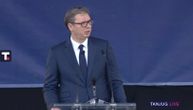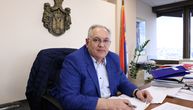Serbia's economy grows by 4 percent, but is set to slow down by the end of the year
Arsic stated that this situation has had a mixed effect on the labor market - employment is increasing, unemployment is decreasing
During the first half of the year, Serbian economy achieved a solid level of growth of around 4 percent, but by the end of the year, a decline can still be expected, with inflation rising further, said Milojko Arsic, a professor at the University of Belgrade's Faculty of Economics.
At the presentation of the 69th issue of the publication "Quarterly monitor of economic trends and policies in Serbia," prepared by the Faculty of Economics and the Foundation for the Development of Economic Science, he added that inflation will be rising in the next few months after which it is expected to start decreasing.
At the beginning of the presentation, Arsic spoke about basic macroeconomic trends in Serbia and pointed out that the economy has achieved a solid growth of 4 percent in the first half of the year.
However, he warned that the trends are worsening, and that there are signs of a significant slowdown.
Arsic said that this situation has had a mixed effect on the labor market - employment is increasing, unemployment is decreasing, but during the year real wages have been declininig.
"Foreign trade and balance of payments have reached 10-year record deficits while inflation is accelerating," the professor said.
He recalled that the National Bank of Serbia (NBS) has been tightening the monetary policy since April and that it is expected that the central bank will continue with its restrictive policy, while the fiscal deficit will increase significantly.
Arsic warned that the deterioration of the geopolitical situation could have a negative impact on macroeconomic trends.
When it comes to economic activities and short-term trends, the professor assessed that GDP growth in the second quarter in Serbia has been solid.
"GDP growth compared to the second quarter of the previous year was 3.9 percent, while compared to the previous quarter, it was 1.3 percent," he said.
He stressed that the signals of an economic slowdown are reflected in the decline in industrial production and construction, a slowdown in investments and consumer consumption, a decline in the real value of income...
Arsic concluded that in the case of Serbia, electricity production problems and the drought are further slowing down the country's GDP.
(Telegraf Biznis)

